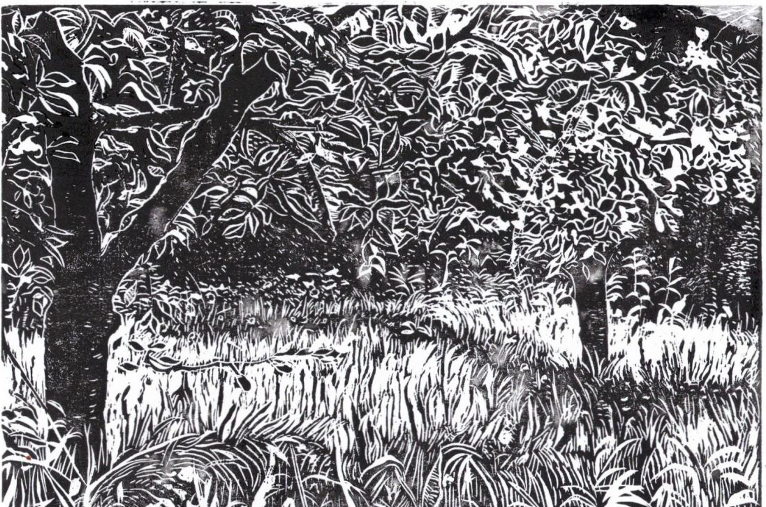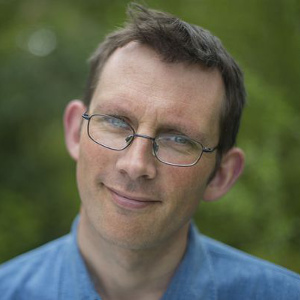One of the benefits of the lockdown has been an awful lot less mowing of lawns in public spaces. There are many places I walk regularly where the grass is now several feet tall, and I love it. In the recent blog I co-authored with Rob Shorter, ‘Introducing the Imagination Sundial’, we suggested a number of ‘practices’ that could be used to refire and to nurture the collective imagination. I would like to suggest that leaving lawns uncut should be added to that list. Hear me out.
There are, of course, many other reasons for leaving lawns unmown, or, as one article I read put it, to take “a step into the unmown”. A recent study by the University of Sussex found that leaving lawns unmown can lead to a three-fold increase in the numbers of flowers and a five-fold increase in the numbers of insects. Those two things are massively important, given the decline in insects, what Edward O. Wilson called “the little things that run the world”. Declines over the past 20 years have been catastrophic, and well documented. We are living through what nature writer Michael McCarthy calls ‘the Great Thinning’. The unmown lawns I pass are so much more vibrant in terms of wildlife than their previous tightly manicured versions were.
In addition to that, I would like to suggest that one of the key roles that unmown lawns play is that they evoke our curiosity. There is just so much to see in them! While I know some of my wild flowers, I know virtually nothing about identifying grasses, and the diversity of different grasses is just dazzling. An unmown lawn is a three dimensional thing of wonder. Way beneath the waving grassy seed head canopy is a forest of plants at different height, with low growing flowering plants beneath taller flowers like buttercups and shorter grasses. It’s like a miniature forest, rich in diversity and what we permaculture folk like to call ‘stacking’.
Once you start looking at it, it is endlessly fascinating. And it evokes so much more curiosity than just a mown lawn does. As Ian Leslie put it in his book ‘Curious’:
“If you allow yourself to become incurious, your life will be drained of colour, interest and pleasure. You will be less likely to achieve your potential at work or in your creative life. While barely noticing it, you’ll become a little duller, a little dimmer”.
The solution, he suggests, is to feed your curiosity. Getting down on the ground and really looking at what’s happening in an unmown lawn absolutely does that. You see spaces like that in the way you did as a child, when you put toy animals or toy soldiers into them, and all of a sudden they became the most fascinating forests, rich in story and adventure.
There is also something so precious about the visual delight that such diverse unmown lawns can bring to our lives. The moving, swirling mosaic of different colours, the variety in shapes and sizes of the grass heads, the splashes of colour from the flowers, are endlessly fascinating. As someone who likes to try and draw them, and who draws inspiration from the efforts of the great artists of the past to do the same thing, unmown lawns are a source of inspiration in a way that mown ones can never be. To walk among a large area that is now waist-high in grasses and flowers is like walking in an immersive three-dimensional Impressionist painting.

I also believe that making space in our lives for the beautiful is really important. A swirling, moving area of long grass and flowers is something that is such a balm for the soul, such a feast for the eyes. As our urban spaces become harsher and offer less and less space to beauty, our lives lose something vital. Personally, I find such spaces so revitalising, so visually delightful and stimulating. I just want to sit in them all day and draw. It always puzzles me why particular patches that I pass aren’t just permanently surrounded by painters and sketchers.
There are, of course, some people who hate long grass, who see it as messy, as ‘untidy’, and somehow the lazy result of not doing something rather than, in fact, the pinnacle of achievement. Bill Mollison, the co-originator of permaculture, once wrote that “tidyness is actually maintained disorder.” Falling in love with the complexity of natural systems, the ever-changing diversity of what nature can do when just left to its own devices, is to reimagine what we mean by ‘tidy’, what we mean by ‘messy’.
The nature poet Gary Snyder once wrote that “Nature is orderly. That which appears to be chaotic in nature is only a more complex kind of order.” Next time you see a patch of long, unmown grass, you may like to sit next to it, and to meditate on that concept, that what you are seeing is in fact, a more complex kind of order, one that lawnmowers obliterate.
And so, with this piece, I now add to my collection of practices that feed and nurture the imagination the practice of not mowing the grass, of rewilding even just a tiny patch of our lives, of relinquishing control over an outcome. Bill Mollison (always a generator of great quotes) also once said “if we lose the universities we lose nothing, if we lose the forests we lose everything”. He was referring to the ability of forests, in their design, their function, their complexity, to teach us everything we need to know about the systems we need to build for the future.
But perhaps we should also imagine that unmown lawns can similarly be our great teachers. That time spent just observing them, in a way a child would observe a tiny forest, can greatly boost our imagination, our curiosity, our connection to and delight with the natural world. Throw out your lawnmower! Let nature heal itself! Prepare yourself for great wonders and delights! I can already hear your imagination expanding from here…







